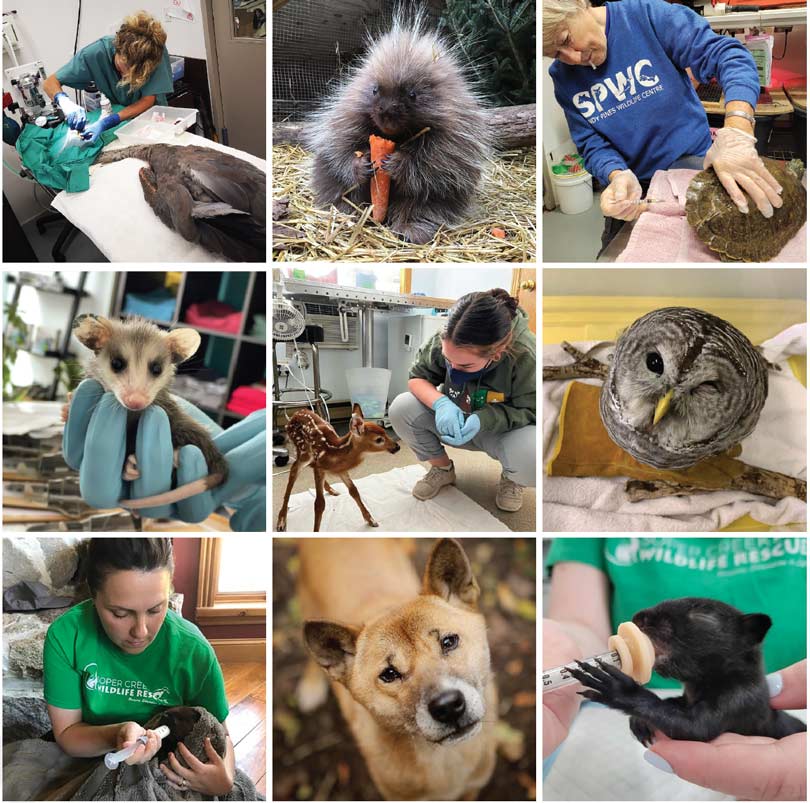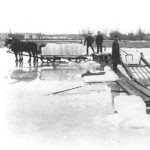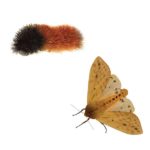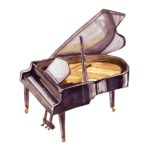
With the expertise of our local not-for-profit wildlife centres, you might be able to help set animals on their road to recovery so they can be released back into their great wild world.
Life as a wild animal is challenging at the best of times. Not only are there natural perils – predators, disease and the constant competition for territory and food – there are also often intended and unintended deadly encounters with humans.
When those encounters do occur, anyone who has ever come across a wild animal in distress is faced with the decision of what to do next.
Fortunately, animals and the folks who love them within our region are served by a relatively small but extraordinarily committed group of wildlife rehabilitators dedicated to rescuing and treating wounded animals and, in the best case scenario, releasing them back into their natural habitat.
KAWARTHA WILDLIFE CENTRE
Kawartha Wildlife Centre operates out of Ennismore, just north of Peterborough. They have two primary goals: the rehabilitation of wildlife for release and public education about healthy relationships between people and wildlife.
Since the Centre began caring for wildlife in 2019, a core group of six to ten volunteers has cared for almost 2,000 wildlife patients on an annual budget of $60,000. Alarmingly, their yearly patient load has increased from 192 in 2019 to 670 in 2021 – and this year there are over 700 patients to date.
Thomas Luloff, Chair of the Board of Directors for the Centre and Professor of Conservation Biology at Fleming College, stated, “As a wildlife rehabilitation centre, we are the happiest on the days when we have no patients whatsoever. We celebrate those days because wildlife is where they belong – in the wild! But how do we get more of those days? Our goal at Kawartha Wildlife Centre is to provide education to our community about ways in which we can foster wildlife coexistence and minimize detrimental human effects. Small steps taken at home and at work do make a big difference! Imagine for a moment if every backyard had just a little corner of ‘wildness,’ maybe a small pond, or a native pollinator garden, or a log/leaf/rock pile; those are stepping stones across towns and cities throughout Ontario for wildlife.”
Kawartha Wildlife Centre relies heavily on their educational efforts, which help people focus on wildlife identification, coexistence strategies, mythbusting, conservation and habitat protection. Their public education initiatives include immersive camp experiences, classroom visits, community events, outreach, workshops and public presentations.
But the Centre received a blow earlier this year after a spring storm damaged their outdoor space and enclosures, requiring an extensive rebuild and refurbish. The repairs have diverted time, energy and money from other projects, such as the portable X-ray machine they need, which will allow the Centre to identify broken bones in-house and not have to transfer injured animals to veterinary clinics. A trip to the vet means another transport for the patient, which is very stressful for them.
SANDY PINES WILDLIFE CENTRE
Sue Meech heads the Sandy Pines Wildlife Centre in Napanee, which helps care for about 5,000 wild animals each year. She became a wildlife rehabilitator “by complete accident” about three decades ago when the local humane society approached her to foster a baby raccoon. Meech, a registered nurse, took on the challenge; word spread quickly and soon people were bringing all kinds of creatures in need of care to her door. Her primary motivation is her deep concern for all the inhabitants of the world – both humans and animals.
From simple beginnings, the Sandy Pines Wildlife Centre has grown into a busy non-profit with as many as 14 staff, complemented by a large roster of volunteers during the high season.
There are many reasons that animals find their way to Sandy Pines. Some are there because of interaction with humans: baby raccoons left orphaned when their mothers are removed by pest controllers; baby animals assumed to be abandoned when in fact their mothers have simply gone off to forage for food; or animals hit by cars. Others arrive at the centre because of forces of nature, for example fledgling birds that have dropped from their nests or baby rabbits orphaned when cats kill their mothers.
The objective of the Sandy Pines Wildlife Centre is to rehabilitate abandoned and injured animals so they can be released into the wild. Full stop. For Sue Meech caging an animal that is unable to be released is not an option. Citing an essay by Niagara area owl rescuer Kay McKeever, she says that if you leave the door open for a caged animal, it will always choose the option of freedom, even if that means it won’t survive.
“I think death [euthanasia] is a better option. If there’s a doubt in our mind, we don’t want to keep an animal alive and suffering. It’s very difficult and at times it’s heartbreaking.”
Sandy Pines takes in all species of wild animals, including non-natives such as starlings. “I can’t think of anything I don’t take. I don’t discriminate. A life is a life.”
SOPER CREEK WILDLIFE RESCUE
Just north of Bowmanville, Stefanie MacEwan’s passion for wildlife has set her on the twin path of educating the public and rehabilitating animals at Soper Creek Wildlife Rescue.
MacEwan, a provincially licensed wildlife custodian – 1 of 3 internationally certified wildlife rehabilitators in Ontario, 1 of 30 in Canada, was intrigued by her son’s interest in local native animals. His fascination with the squirrels and the other wildlife that lived in and around their own backyard as opposed to the exotic species found in zoos, inspired her to work within the field of animal rescue.
It wasn’t long before she and her husband, Justin Vandebelt, built the framework for Soper Creek Wildlife Rescue. They sold their home and Justin began putting in long hours in his spare time building enclosures to house animals. Five years on, Soper Creek has a staff of 5 and a roster of 200 volunteers engaged in both wildlife rehabilitation and the outreach program that funds the centre’s activities.
Soper Creek does keep some animals in captivity, and uses a small number of selected “animal ambassadors” to interact with the public for educational purposes. MacEwan doesn’t believe animals that are born in captivity should be released. “Some have been pets,” she says. “These animals could never survive in the wild.”
As part of its public outreach, Soper Creek also allows visitors who pre-book to visit its wildlife centre, where they can hike, visit the animal ambassadors in an “enchanted forest” and take part in other activities including workshops. However, “the public will never see the majority of our animals,” says MacEwan.
“A lot of the time it’s educating people about coexistence. My belief is that in order to touch some – one’s mind, you have to touch their heart.” Mac – Ewan believes people who don’t appreciate wildlife around them are missing out. “I think that passion is infectious.”
WHAT TO DO
In Ontario, wildlife rehabilitators are governed by the Fish and Wildlife Conservation Act, which states that the only people permitted to care for sick, young or injured wild animals are veterinarians and authorized wildlife custodians. If you find an animal in apparent distress, you are allowed to transport it or keep it for up to 24 hours for the purposes of getting it to a rehabilitation centre.
Your first step should be to determine whether the animal truly needs assistance. Perhaps the most common encounter is a bird that has bumped against a window. In such cases the best initial response is to place the bird somewhere safe where it can be kept warm, quiet and in the dark. Often the bird will recover quickly to be released into the wild.
In the situation where a baby bird has fallen from a nest, ignore tales about how it will be rejected if touched by human hands, and simply put it back. Another fairly common scenario is to find a young animal, such as a fawn, apparently abandoned by its mother. In this case, the mother may be out foraging and is probably nearby. Check again in a couple of hours. Odds are the fawn and its mother will have reunited.
If it’s clear the animal is in distress, begin by noting where you’ve found it so it can be returned to the same location once it has recovered. Take notes and GPS coordinates. Then put on a pair of heavy gloves. Approach the animal from behind and cover it with a large towel, blanket or jacket. Expect a struggle. Place it in an appropriate box or pet carrier, lined with newspaper strips or paper towel, which has both secure openings and adequate ventilation. Birds can be kept in a paper bag. Keep the container and the animal in a warm, dry and quiet place. Remember that “less is best” until you get it to a wildlife rehabilitation centre. Do not provide food or water.
Wildlife centres such as Kawartha Wildlife, Sandy Pines and Soper Creek have emergency contact numbers posted on their websites which will connect you to someone who can tell you what your next step is – usually bringing the animal in for treatment. Another great resource is the Ontario Wildlife Rescue website. It lists all wildlife centres in the province, their contact information, and the animals they specialize in.
You never know when you might encounter an animal in distress. With the expertise of our local not-for-profit wildlife centres, you might be able to help set them on their road to recovery so that they can be released back into their great wild world. It’s comforting to know there are people out there who are fiercely dedicated to the wellbeing of wildlife.
For more information:
Kawartha Wildlife Centre at: kawarthawildlifecentre.ca
Sandy Pines Wildlife Centre site at: sandypineswildlife.org
Soper Creek Wildlife Rescue site at: sopercreekwildlife.com.
Ontario Wildlife Rescue site at: ontariowildliferescue.ca
Other wildlife centres in the region include the Ontario Turtle Conservation Centre near Peterborough.
Story by:
Norm Wagenaar




